
دنیای مهندسی سازه های دریایی
Offshore Structures
دنیای مهندسی سازه های دریایی
Offshore StructuresMono Piles Foundation installation/نصب شاسی توربین های بادی فراساحل

Mono Piles Foundation installation
Depending on the foundation type, the installation vessel and strategy may differ.
Currently, approximately 90% of offshore wind turbines are installed on monopiles and the remainder are installed on jackets, tripods or gravity-based support structures.
There are also a few demonstration floating turbines, which have no bottom-fixed
foundations.

Mono piles


The the foundation pile or Mono pile (MP) support structure is a relatively simple design by which the tower is supported by the mono pile, either directly or through a Transition piece or (Transition Platform) (TP). One of the main advantages of the mono pile foundation is the easy application for a large number of wind turbines. A large number of piles can be transported to the building site by the installation vessel itself or by a transportation barge. The next step is the installation of the scour protection (static scour protection), although it is possible to install scour protection after pile installation (dynamic scour protection). The foundation used is a steel monopile, 45m long on average with a diameter of 4,6m and a wall thickness of 40 to 60mm. Its weight is approx. 230 tons. These piles were made at Bladt industries in Denmark.

The transition piece is lifted and placed on the top of the monopile and then the space between the monopile and the transition piece (about 10e20 cm thick) is
grouted. The top of the transition piece is used as the work platform and the sides
are used for boat landing and ladder placement The mono pile continues down into the seabad.
Monopiles are large hollow steel or concrete tubes, whose thickness and diameter vary
based on the turbine size, soil condition , water depth and hydrodynamic loads on the monopile portion: wave, current, and ice loads, seismic loads.The effects of wave and current kinematics on the loading of a monopile tower can be
calculated via the Morison equation for slender members

wind-generated, near surface currents, and subsurface currents generated by tidal motion, storm surges, and atmospheric pressure Variations
Before installation of a monopile, a layer of scour protection should be applied to avoid seabed erosion around the monopile. This first scour protection layer is made by rock dumping around the monopile position. When the first layer of scour protection is made, monopiles are lifted from the installation vessel and then positioned on the seabed.
Common installation methods of monopiles are pile driving using a hydraulic hammer or pile drilling .

On average it takes about one or two days to install a monopile using these methods. If pile driving using a hydraulic hammer is chosen,depending on the seabed condition and water depth, it takes about 2000 to 3000 hammer hits to drive the monopile into the ground. During the pile driving or drilling,the piling depth is continuously monitored to make sure the monopile is placed into the correct depth.
The installation sequence of the pile starts with lifting it into position by a large crane or heavy lift vessel. The pile will be lifted from a floating position, afterwards the bulk heads will be removed and then the open ended pile can be aligned into position. This will be done by an alignment tool at a certain distance above the sea level, as can be seen in Figure. The pile will penetrate into the seabed due to its own weight, depending on the soil conditions. To drive the pile into the ground, a hydraulic hammer is lifted onto the pile, or the pile can be drilled in case of very hard soil.
Around the foundation a layer of rocks was placed to provide scour protection. As seawater flows around the monopile it creates turbulence which erodes the seabed sand directly around the monopile (this is the actual scour process) and so endangers the
stability of the foundation. The scour protection prevents the sand from being eroded away. In total about 50.000 tons of stone have been installed on the seabed around the monopiles (see also Figure below).

In figure a schematic overview is given on the major parts of an offshore windmill
At the bottom of the wind turbine is the foundation pile or monopile (MP
This is a simple steel tube that is hammered into the seabed. Because it is hammered, it cannot be guaranteed that it is perfectly vertical. Also the top of the pile gets damaged in this process
Indicated in yellow is the Transition Piece (TP). Typical characteristics are as follows: the lower 6m of this 25m high structure slides over the top of the monopile. Jacks are used to align the TP vertically to correct the MP skewness. Then the space between the TP and MP is grouted to fix the connection.
Furthermore the top of the TP offers a nice flange for the tower to be bolted o
After that the tower is installed on top of the TP. The Rotor Nacelle Assembly (RNA) is installed on top of the tower, sometimes in one go, and sometimes first the nacelle is installed and then each
blade independently afterwards.

The suction pile can also be a support structure in combination with a monopole on top of it . The suction pile is relatively short in relation to the diameter, and therefore called pile, but the
diameter can be larger compared to the length and in that case it is called a suction can or suction anchor . The main principle behind the suction anchor is the pressure difference, which is createdby pumping the water out of the pile or can while it is placed upside down on the seabed. The pressure difference is the main driving force to drive the pile into the seabed, and therefore this support structure is less suitable for shallow waters. Furthermore, the tension capacities and bending moment capacities might be lower compared to a pile foundation. The suction pile is not taken into account any further.



Monopiles are typically used in shallow water depths, but may become too flexible for water depths of between w30 and 40 m, in which case monopiles fitted with guy wires, or alternatively tripod and jacket/lattice structures,are considered as economical alternatives. For greater depths, time-consuming
installation and the effect of soil degradation, which occurs around the pile shaft at seabed level, make monopile foundation solutions prohibitive

امیدوارم در فیلم های بعدی توضیح بیشتری درباره این سازه و نحوه چیدمان حلقه ، جوش پودری ، تست جوش و دیگر مراحل این سازه بنویسم .
هدف از نمایش این فیلم نحوه انتقال سازه به محل پروژه بود انتقال این سازه به دو روش است سوار کردن روی بارج یا شناور کردن این سازه و کشیدن ان توسط یدک است همه اینها بستگی به طول سازه دارد.

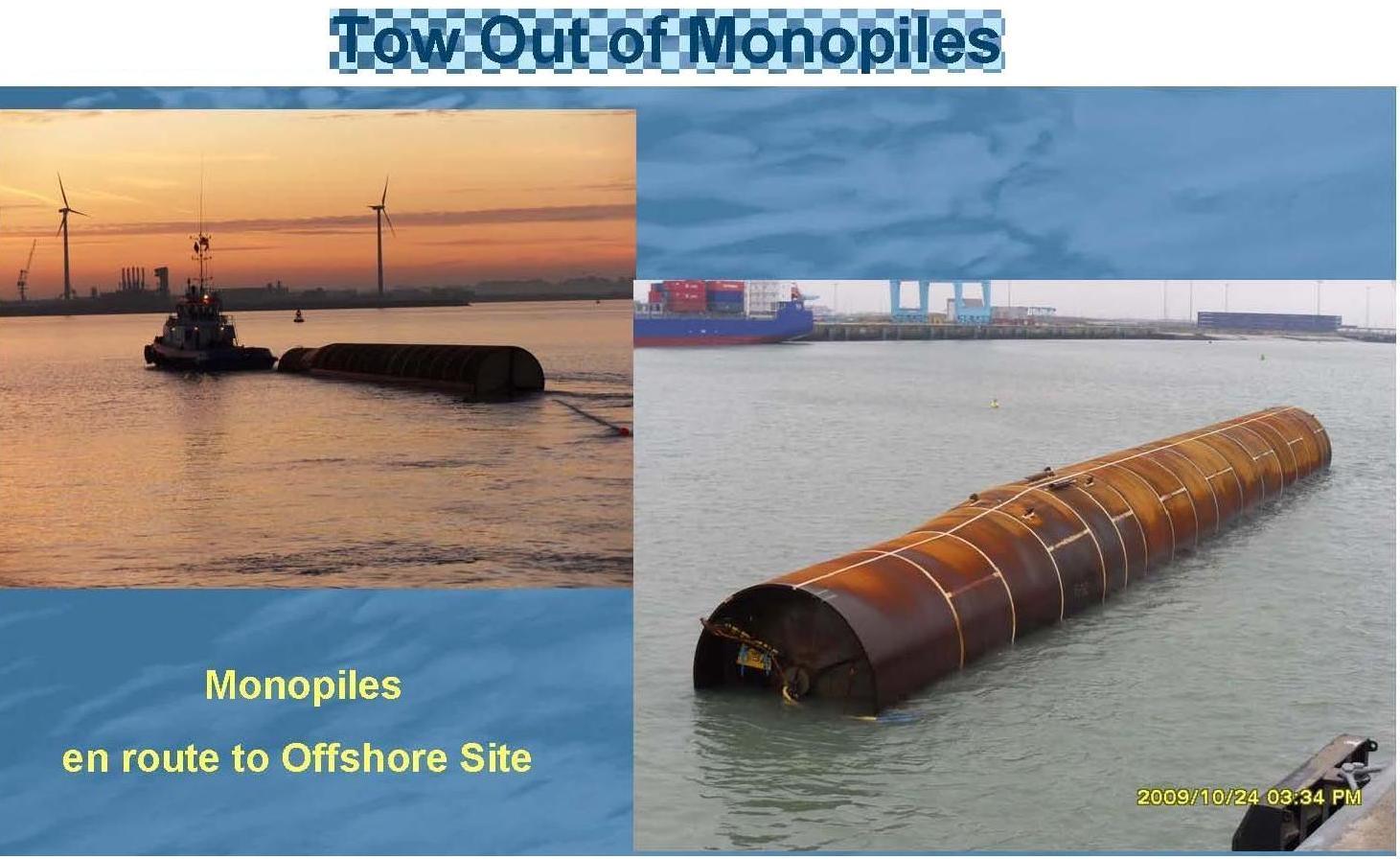

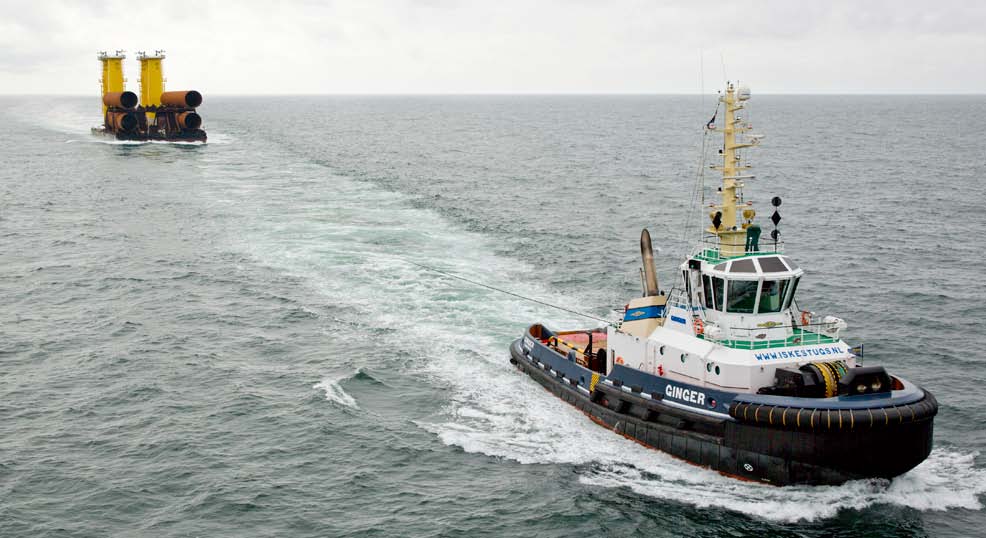

این پروژه ها توسط سرمایه گذاری مشترک چندین کشور اورپایی انجام می شود که برای مراحل انجام هر کاری یا قسمتی از آن در کشورهایشان سرمایه گذاری شده است و امروزی برای کم هزینه کردن این پروژه ها در حال مطالعه هستند تا بتواند هم تجهیزات کم هزینه استفاده شود هم برنامه زمان بندی آن را کاهش دهند.در قسمت های بعدی درباره کارخانه ساخت شاسی توربین های فراساحل بیشتر خواهم نوشت




Frontiers in Offshore Geotechnics III,Vaughan Meyer,CRC Press,2015
این کتاب درباره سرحدهای ژئوتکنیک فراساحلی می باشد، که دارای 1398 صفحه و در 2 جلد می باشد. مجموعه ای از مقالات ارسالی به موسسه ژئوتکنیک نروژ می باشد که توسط Vaughan Meyer جمع آوری شده است. با این عناوین
Frontiers in Offshore Geotechnics III,Vaughan Meyer,CRC Press,2015
The titles
This file is password
Password: CE-MS MS.c Bijan Mohammadi
All text and change the color to use to download it
دانلود/Download کلمه عبور/ Password
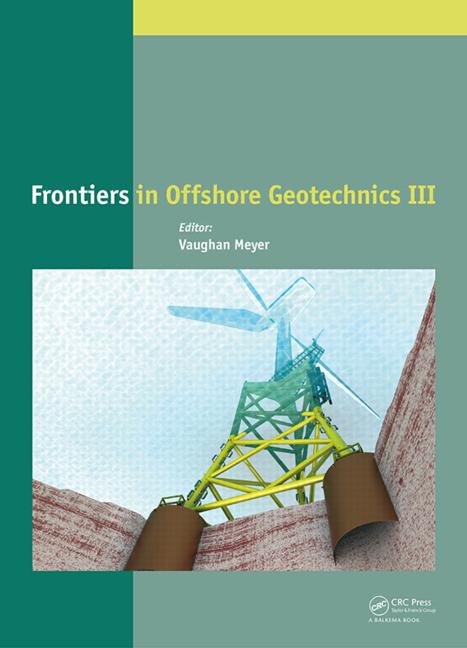
Volume 1
*Keynotes
The suction foundation technology
Geotechnics for wells top-hole section and conductor
The effects of pile ageing on the shaft capacity of offshore piles in sand
A FE procedure for calculation of cyclic behaviour of offshore foundations under partly drained conditions
Geohazard risk evaluation and related data acquisition and sampling program for the methane hydrate offshore production test
Deterministic and probabilistic advances in the analysis of spudcan behavior
*Suction anchors and caissons
Installation of suction caissons for an asymmetrical support structure in sandy soil
Simplified earthquake analysis for wind turbines and subsea structures on closed caisson foundations
Laterally loaded suction caissons with aspect ratio of one
Seismic response of bucket foundations for offshore wind tower using dynamic centrifuge tests
Friction degradation and strength regain along suction piles in soft deep water Gulf of Guinea clays
Suction pile foundation for a PLET subsea structure
Suction caisson extraction resistance in Gulf of Guinea clay
Performance of a shallow skirted foundation for TLP mooring in carbonate silt
Calculation of undrained holding capacity of suction anchors in clays
Interpretation of centrifuge tests of suction anchors in reconstituted soft clay
CAISSON_VHM: a program for caisson capacity under VHM load in undrained soils
Suction anchor geotechnical design practice: A case study
Centrifuge model test for bearing capacity evaluation of hybrid suction foundation on clay under vertical and horizontal loads
Pullout resistance of horizontal and inclined loaded suction anchor installed in silty sand via centrifuge modelling
Skirt penetration resistance in carbonate soils from the CPT
Horizontal capacity of multiple suction anchors using numerical analysis
Dynamic behaviour of mono bucket foundations subjected to combined transient loading
Novel monitoring solutions solving geotechnical problems and offshore installation challenges
Effect of torsion on suction piles for subsea and mooring applications
Comparison of design methods for axially loaded buckets in sand
Caisson capacity in undrained soil: Failure envelopes with internal scooping
P–y curves for bucket foundations in sand using finite element modeling
*Pipelines, risers and subsea earthworks
Seabed stiffness model for steel catenary risers
Ultimate uplift capacity of buried pipelines in undrained clay
Evaluation of a toroid for model pipeline testing of very soft offshore box core samples
Excess pore pressure redistribution beneath pipelines: FEA investigation and effects on axial pipe-soil interaction
Pipeline embedment and consolidation beneath on-bottom pipe model in kaolin clay
The soil strength degradation influence in the axial pipe-soil resistance
Pipe-Soil Interaction: Recent and future improvements in practice
Predicted and observed settlements of a subsea rock installation – comparison between field measurements and FE simulations of soft North Sea clay
Effects of different loading time histories on fatigue design of steel catenary risers using nonlinear riser-soil interaction models
A new torsional shear device for pipeline interface shear testing
Large scale experiments on the riser-soil interaction in clay
An integrated approach to pipeline burial in the 21st century – The current state-of-the-art
Direct shear interface tests for pipe-soil interaction assessment
Evaluation of pipe-soil interaction in liquefied soil
Pipe-soil interaction under rapid axial loading
Mechanical trencher modelling in hard ground: State-of-the-art
Finite element analysis of soil damping for pipeline slugging
Geotechnical considerations for pipeline stabilization design using rock berms
Pipe-soil interaction mechanism during pipeline upheaval buckling in loose saturated sand
Study of vertical pipe-soil interaction based on Coupled Eulerian-Lagrangian method
Stress level effects on plane-strain pipe uplift resistance
Theoretical analysis and model test for pipeline protection from dragged anchors
A discrete element study on upheaval ratcheting behavior of pipelines buried in sand
An investigation on existing nonlinear seabed models for riser-fluid-soil interaction studies in steel catenary risers
Geotechnical design and construction aspects of a pipeline-escarpment crossing
*Piled foundations
Modelling of laterally loaded screw piles with large helical plates in sand
Design methodology for cyclically and axially loaded piles in chalk for Wikinger OWF
Full scale offshore verification of axial pile design in chalk
Centrifuge investigation of the axial cyclic behaviour of a single pile used for the foundation of a jacket type offshore wind turbine
Review of pile driving results for the Maui and Maari developments in the Taranaki basin of New Zealand
Cyclic pile load tests combined with laboratory results to design offshore wind turbine
Foundations in chalk
Comparison of pile bearing capacity from CPT and dynamic load tests in clay considering soil setup
The use of pipe piles for creating ice protection barrier
Improvement of bearing capacity of vibratory driven open-ended tubular piles
Small strain overlay to the API p-y curves for sand
Boulder-soil-pile dynamic interaction
Driven pile design in weak rock
Effect of soil set-up during interruption of offshore pile driving
Axial capacity design practice for North European wind-turbine projects
Lessons learned from pile driving and monitoring in gravels on the Northstar Artificial Island
Innovative design of foundations – offshore wind farm substation
A preliminary experimental study on the mechanism of local scour at pile groups in steady currents
Interpretation difficulties of pile set-up in sand
Evolution of driving resistance during driven pile installation
CPT-based pile shaft friction in calcareous sands of western Indian offshore
Synthesis of pile driving data in South East Asia
Case studies – predicting soil resistance to driving in South East Asia
Axial capacity ageing trends of piles driven in silica sands
In situ and laboratory tests in dense sand investigating the helix-to-shaft ratio of helical piles as a novel offshore foundation system
Re-assessment of pile driveability predictions on sites offshore Nigeria
Numerical implementation of soil-pile interaction models for monotonic and reversed axial loading
Ultimate lateral resistance of laterally loaded piles in undrained clay
Deepwater jetted piles: Numerical modeling of jetting action and axial bearing capacity
Centrifuge model tests on laterally monotonic and cyclic pile-soil interaction of a tetrapod jacket foundatio
*Monopiles
Model pile response to multi-amplitude cyclic lateral loading in cohesionless soils
On the development of a hybrid foundation for offshore wind turbines
Alternative p-y curve formulations for offshore wind turbines in clays
Improving the lateral resistance of offshore pile foundations for deep water application
New design methods for large diameter piles under lateral loading for offshore wind applications
Cyclic lateral loading of monopiles for offshore wind turbines
Observed variations of monopile foundation stiffness
Design of large diameter monopiles in chalk at Westermost Rough offshore wind farm
Influence of vertical loads on the behavior of laterally loaded large diameter pile in sand
Predicting monopile behaviour for the Gode Wind offshore wind farm
Evaluation of a new p-y approach for piles in sand with arbitrary dimensions
Experimental trends from lateral cyclic tests of piles in sand
Effect of relative pile’s stiffness on lateral pile response under loading of large eccentricity
Numerical modelling of large diameter piles under lateral loading for offshore wind applications
Volume 2
*Shallow foundations
Prediction and worked example for a sliding foundation on soft clay
Effects of drainage on the response of a sliding subsea foundation
Undrained bearing capacity of skirted mudmats on inclined seabeds
Three-dimensional limit analysis of rectangular mudmat foundations
Collision of double hull tanker with gravity base foundation of offshore wind turbine: case of horizontal drift and swell
Some key aspects in geotechnical design of GBS foundations on sand
A framework for the design of sliding mudmat foundations
Undrained vertical bearing capacity of perforated shallow foundations
Simulation of a full-scale test on a gravity base foundation for offshore wind turbines using a high cycle accumulation model
System integration of direct on-seabed sliding foundations
*Anchoring systems
Pullout capacity of plate anchors in sand for floating offshore wind turbines
Centrifuge model study on pullout behavior of plate anchors in clay with linearly increasing strength
Large deformation numerical analysis of plate anchor keying process
The role of partly remoulded clay in fluke and plate anchor design
Numerical modeling of drag anchors of floating structures – comparison of ultimate holding capacity with limit equilibrium methods
Design and performance of suction embedded plate anchors
Soil flow mechanism around deeply embedded plate anchors during monotonic and sustained uplifts
Comparison between FEM analyses and full-scale tests of fluke anchor behavior in silty sand
Dynamically Installed Anchors: Performance of embedded mooring chain profile in clay
A review of anchor technology for floating renewable energy devices and key design considerations
Numerical modelling of the SEPLA during keying process
Behavior of Suction Embedded Plate Anchors with flap during keying in clay
Chain configuration in sand, theory and large scale field testing
Cyclic response of shallow helical anchors in a medium dense sand
Numerical investigation on line tension-induced pore pressure accumulation around an embedded plate anchor
Behaviour of OMNI-Max anchors under chain loading

ایده طراحی لنگر OMNI-MAX بر گرفته از لنگرهای مکش دیگر از جمله لنگر مکش صفحه جا سازی شده می باشد دامنه درگیر این سازه نسبت به لنگر مکشی بیشتر است این لنگر فوق در ایالات متحده آمریکا به شماره ثبت اختراع 7059263 ثبت شده است. در مورد لنگرها در همین وبلاگ دنیای سازه های دریایی درباره آن نوشته شده است.
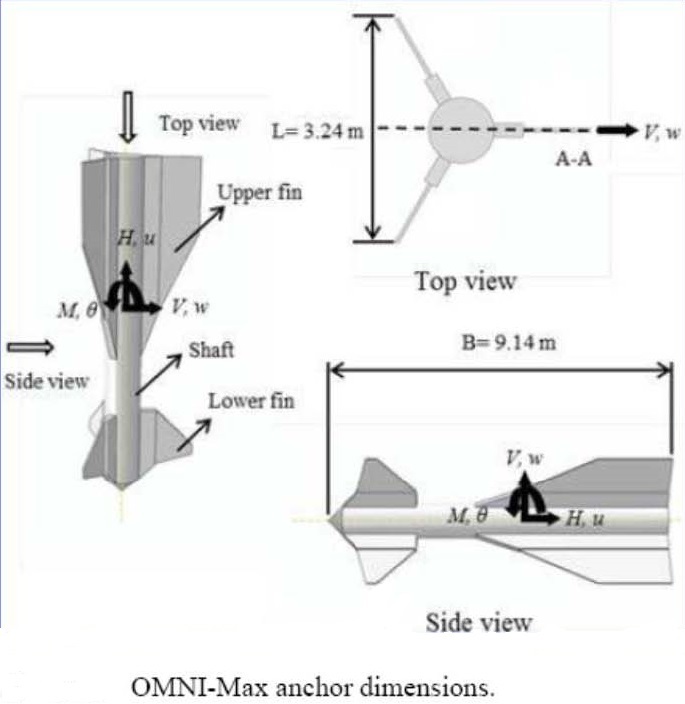

این مقاله درباره لنگر OMNI-MAX می باشد
All text and change the color to use to download it
کلمه عبور/Password دانلود/Download
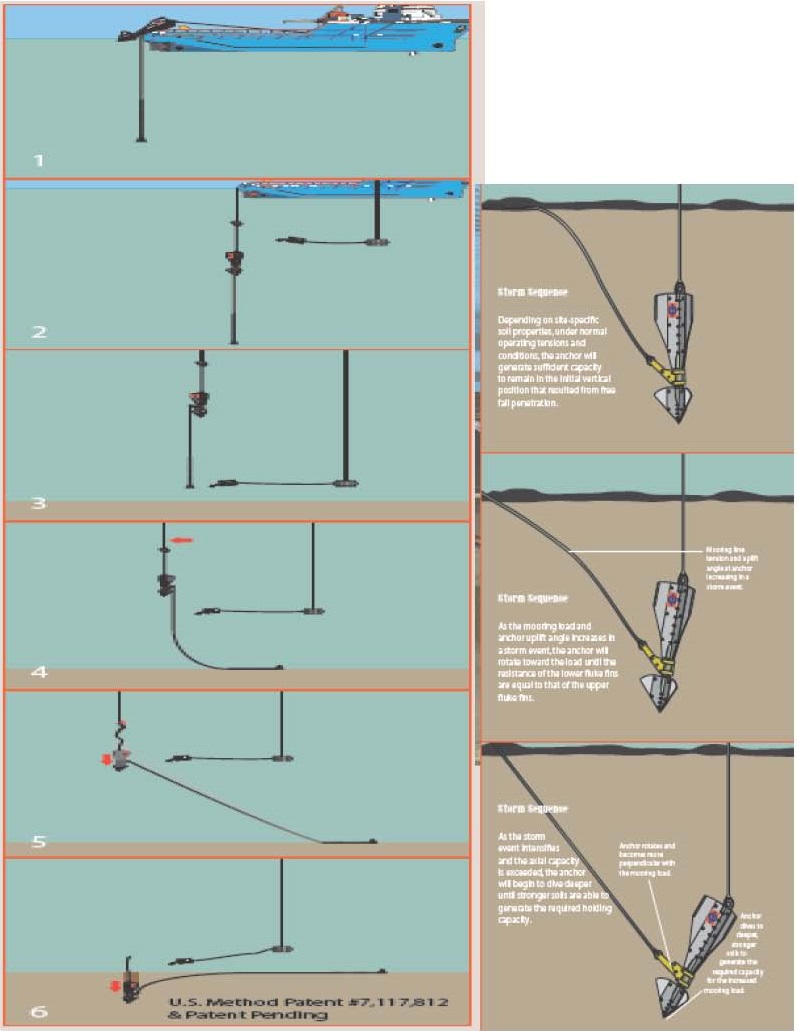
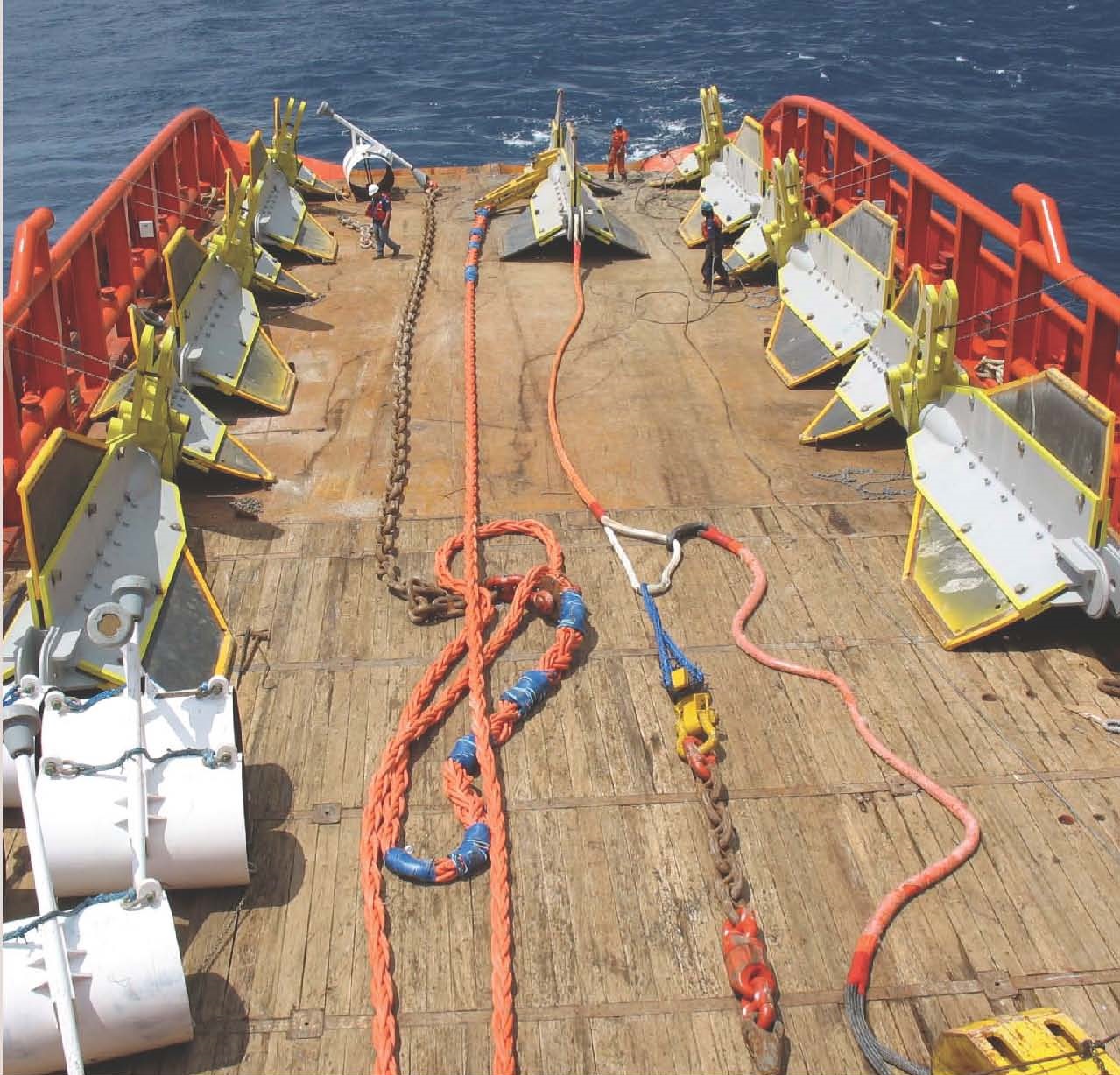
*Geohazards and integrated studies
Predictions of ice scour loads from small scale tests under 1 g conditions
Areas 2 and 5 offshore Mozambique: Mass-movements on a deep-water margin with scant adjacent shelf
Turbidity current hazard assessment for field layout planning
Bayesian mechanistic imaging of two-dimensional heterogeneous elastic media from seismic geophysical observations
Optimization of deep-water pipeline routes in areas of geologic complexity – an example from the Southern Gulf of Mexico
Understanding the element of time in probabilistic submarine slope stability analyses
Effect of fines on mechanical properties of methane hydrate bearing sands
Numerical analysis of submarine debris flows based on critical state soil mechanics
The life cycle of geohazards within an offshore engineering development
Numerical analysis of stability of seafloor slope under linear waves
Offshore 1D infinite slope modeling in seismic conditions with OpenSees
Numerical simulations of shallow gas migration in vicinity of platforms in offshore Malaysia: Effects of relief wells on excess pore pressure dissipation
Geotechnology – Converting site investigations into 3D geotechnical models
Weak interlayers effects on seismic performance of a deepwater slope
Integration of very-high-resolution seismic and CPTU data from a coastal area affected by shallow landsliding – the Finneidfjord natural laboratory
Influence of gas hydrate dissociation on mechanical properties of gas hydrate-bearing sediment
*Soil characterisation and modelling
Effect of pore pressure build-up on the seismic response of sandy deposits
Potential of estimating relative density by measuring shear wave velocity in field and in laboratory
Strength of a carbonate silt at the solid-fluid transition and submarine landslide run-out
Results of geotechnical characterization in the laboratory of clays from offshore Mozambique
Temperature effects on laboratory measured strength on deep water soft clays
Procedures for estimating hysteretic foundation damping
Development of nonlinear foundation springs for dynamic analysis of platforms
Planning of soil investigation for GBS foundation design
Characterization of in-situ effective stress profiles in clays based on piezo-cone penetration test (CPTU) results
New standards and practice of Arctic offshore soil investigation (by Russian experience)
Piezocone evaluation of undrained strength in soft to firm offshore clays
Idealized load composition for determination of cyclic undrained degradation of soils
A new piston sampler for a remotely operated drilling system
Some characteristics of carbonate sediments from North West Shelf, Western Australia
Predictive equations of shear wave velocity for Bay of Campeche sand
Strain ε50 and stiffness ratio (E50/Su) for Gulf of Mexico clays
Suitability of Masing rules for seismic analysis of offshore carbonate sediments
Simulation and experimental study of soil behaviors under principal stress rotations
Strength parameters for suction anchors in a high plasticity Ghana clay
The Maximum-Entropy Meshless method for dynamic and coupled analysis of offshore geotechnical problems
Shear wave velocity and shear modulus in offshore clays
*In situ and laboratory testing
Method dependency for determining maximum and minimum dry unit weights of sands
Shear strength of dense to very dense Dogger Bank sand
Assessment of dissipation tests in silty soils with standard and non-standard decay
Stiffness degradation and damping of carbonate and silica sands
Cyclic laboratory testing of chalk to improve the reliability of piled foundation design
Measurement and interpretation of downhole seismic probe data for estimating shear wave velocity in deep-water environments
The variation of the T-bar bearing capacity factor at shallow depths
Weak fractured rock coring via a seafloor based drilling system – a case study
Measurement uncertainty of offshore Cone Penetration Tests
An instrumented sampler and its application for suction caisson design
Comparison of shear modulus from SCPT, PS logging & laboratory tests of offshore Myanmar
Visualizing the failure surface of a laboratory vane shear in soft clay using transparent surrogate soil
A specialized triaxial testing technique for deep-sea pressure core sediments
Numerical investigation of ball penetrometer performance in dense sand overlying uniform clay
Rock-steel interface testing and considerations for gravity foundations for tidal energy generators
*Jack-up units
The effects of jack-up installation procedures on spudcan capacity in offshore carbonate sediments
A finite element study of boulder interaction with spudcans
Findings of the ISSMGE jack-up leg penetration prediction event
Finite element analyses of spudcan – subsea template interaction during jack-up rig installation
Estimation of spudcan penetration using a probabilistic Eulerian finite element analysis
Calculations of leg penetrations of heavy lift jack-up vessels in multi-layered soils
Effects of consolidation during spudcan installation in carbonate silty clay: A dual approach
Squeezing bearing capacity and effects of increasing strength with depth
Stability assessment of A-shaped mudmats of mobile production units
Linear and nonlinear foundation response in dynamic analyses of jack-up structures
Comparison of coupled and decoupled approaches to spudcan-pile interaction
Sinkage analysis of A-shaped jack-up mudmats using the Coupled Eulerian Lagrangian approach
Mariner and Gina Krog jack-up foundation challenges
A novel spudcan design for improving foundation performance
Jack-up spudcan penetration analysis: Review of semi-analytical and numerical methods
*Design, risk and reliability
A perspective on selecting design strength: Gulf of Mexico deepwater clay
Reliability-based design optimization of laterally loaded monopile foundations for offshore wind turbines
A reliability approach to cable risk assessment
Approach for the calibration of the load and resistance factors for axial pile capacity calculations
Accounting for the spatial variability of soil properties in the reliability-based design of offshore piles
Uncertainty-based characterization of piezocone and T-bar data for the Laminaria offshore site
Comparison of DNV and API design codes for design of suction anchors
به نظر من این مقاله عالی چون مقایسه دو آیین نامه می باشد جالبی این کار هر دو آنها در این موسسه کار می کنند
A safety concept for penetration analyses of suction caissons in sand
